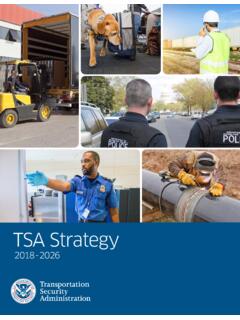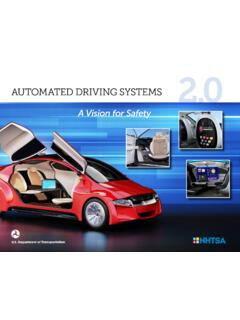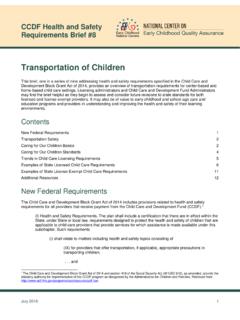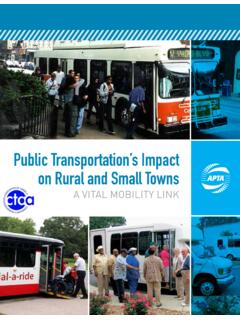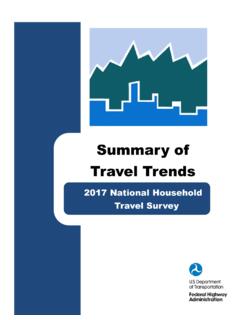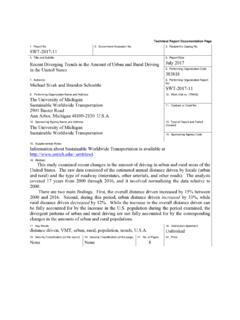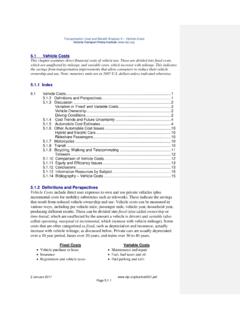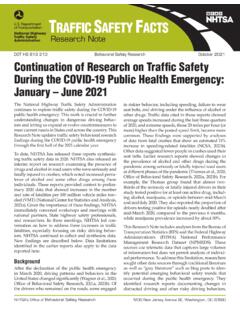Transcription of TRAFFIC FATALITY CAUSES AND TRENDS IN MALAYSIA
1 TRAFFIC FATALITY CAUSES Akmal Abdelfatah AND TRENDS IN MALAYSIA . TRAFFIC FATALITY CAUSES . AND TRENDS IN MALAYSIA . by Akmal Abdelfatah Civil Engineering Department, American University of Sharjah Abstract Relative to its population, MALAYSIA has one of the highest TRAFFIC FATALITY rates in the world. This paper analyzes Malyasian TRAFFIC accidents and FATALITY rate TRENDS in an effort to (1) understand how private vehicle use patterns affect FATALITY rates, and (2) explore policy changes that might reduce the number of TRAFFIC fatalities in Malaysian cities. Private vehicles in MALAYSIA , passenger cars and motorcycles represent more than 90 percent of all registered vehicles. Only percent of accidents involve motorcycles and yet, motorcyclists comprise a staggering 60 percent of all TRAFFIC fatalities. The trend for the rate of fatalities per 100,000 Malaysians shows almost a constant value over the study period. There is a decreasing trend, however, when considering the FATALITY rate per 100,000 registered vehicles.
2 At the same time, the percentage of motorcycle fatalities increases over the study period. Although there are no specific months when TRAFFIC fatalities are significantly higher, almost 40 percent of TRAFFIC accidents occur during the late afternoon and early evening. This paper suggests short-term and long-term strategies that might reduce motorcycle fatalities in MALAYSIA , including the enforcement of TRAFFIC regulations. Introduction Sustainable transportation systems are vital elements of sustainable cities. One of the major factors that influences transportation system sustainability is TRAFFIC safety. TRAFFIC accidents represent a major problem facing many countries around the world. In fact, TRAFFIC accidents have been reported as the ninth most common cause of death, according to the World Health Organization (WHO). The total number of annual TRAFFIC accident fatalities is estimated to be approximately million [1]. In a later study, WHO estimated the number of fatalities to be approximately million [2].
3 Many cities around the world are working to reduce the TRAFFIC FATALITY rate ( , the number of fatalities relative to the population or the MALAYSIA Sustainable Cities Program, Working Paper Series 1 Akmal Abdelfatah & Massachusetts Institute of Technology 2016. TRAFFIC FATALITY CAUSES Akmal Abdelfatah AND TRENDS IN MALAYSIA . number of registered vehicles). However, WHO's data revealed that the estimated FATALITY rate in MALAYSIA is among the highest in the world in 2013. In addition, MALAYSIA has one of the highest TRAFFIC FATALITY rates in the region (Figure 1) [2]. The ninth and tenth Malaysian Plans [3, 4]. indicated that MALAYSIA aspires to be a developed country by 2020. Figure 2 shows the FATALITY rate in MALAYSIA in comparison to selected developed countries, based on WHO data [2]. The data in Figures 1 and 2. confirm that MALAYSIA has a significant TRAFFIC problem based on the high FATALITY rate. Figure 1. Comparing the FATALITY rate in MALAYSIA to other countries in the region [2].
4 Figure 2. Comparing the FATALITY rate in MALAYSIA to other developed countries [2]. At the risk of stating the obvious, this degree of TRAFFIC -related carnage engenders high costs far beyond the human toll. In 2009, for example, the Malaysian government spent RM billion as a result of TRAFFIC accidents [5]. MALAYSIA Sustainable Cities Program, Working Paper Series 2 Akmal Abdelfatah & Massachusetts Institute of Technology 2016. TRAFFIC FATALITY CAUSES Akmal Abdelfatah AND TRENDS IN MALAYSIA . Literature review The following literature review is divided into two main sections. The first provides a summary of studies that have investigated the rates and CAUSES of TRAFFIC accidents/fatalities in various countries around the world. The second provides suggested interventions that might help reduce the TRAFFIC accident/ FATALITY rate. TRAFFIC accident/ FATALITY rates and CAUSES Most TRAFFIC FATALITY rate studies consider the FATALITY rate in relation to the population or number of registered vehicles in the study area.
5 Zhao [6, 7] studied road TRAFFIC accidents in China from 2000-2005. He concluded that the main factors related to TRAFFIC fatalities in China included the experience of the driver, the road classification, and the level of urban development surrounding the road. He further identified other factors linked to safety issues and significantly high FATALITY rates. These factors include drunk driving , poor road conditions, and expensive tolls (which lead to overloaded trucks). In addition, population growth in China is considered to be one of the main CAUSES of the high TRAFFIC accident rate [8, 9]. In a more recent study, Zou and Sun [10] considered the characteristics of TRAFFIC accidents in some parts of China and found that the drivers' behavior was the most significant factor affecting TRAFFIC accidents. More specifically, they indicated that speeding and driving in the wrong lane caused the majority of TRAFFIC accidents. The developed world shows some similar patterns. For example, driver behavior has also been listed as one of the major reasons for TRAFFIC accidents in Norway [11].
6 Age and gender were identified as significant factors influencing driver attitudes [11]. Melchor et al. [12] studied the TRENDS of fatalities due to car accidents in Spain for the period from 1987 to 2011, focusing on the effect of gender and age on FATALITY rates. They noted that the FATALITY rate was reduced over the study period, with the highest reduction in the FATALITY rate occurring in the 15-34 age group (about 90 percent reduction). They noted further that the FATALITY rate among women was much lower than among men. In Japan, Jiang and Zhang [13] investigated the effect of TRAFFIC congestion caused by accidents, and the provision of real-time TRAFFIC information on the drivers' behavior. The study was based on a stated preference survey that comprised 2,500 drivers. The results indicated that accident-clearance time had the largest influence on drivers behavior, and that information about accident clearance should be provided as an interval, rather than an exact time.
7 MALAYSIA Sustainable Cities Program, Working Paper Series 3 Akmal Abdelfatah & Massachusetts Institute of Technology 2016. TRAFFIC FATALITY CAUSES Akmal Abdelfatah AND TRENDS IN MALAYSIA . Bhagyaiah and Shrinagesh [14] analyzed TRAFFIC -accident data in India using Geographic Information Systems (GIS). They found that between 2001 and 2013, TRAFFIC (both motorcycles and cars) had increased more than 200 percent, without a concomitant increase in road capacity. They also demonstrated that GIS can help analyze TRAFFIC -accident data, and help determine the TRENDS of TRAFFIC accidents on the road network. Hisleius [15] concluded that the TRAFFIC vehicle mix ( , only light vehicles, or a combination of heavy and light vehicles) has a major effect on accident TRENDS . Bener et al. [16] applied regression analyses to determine the relationships between accidents and the population or number of registered vehicles. The study developed models using TRAFFIC accident data from Jordan, the United Arab Emirates (UAE), and Qatar.
8 Exponential models proved most effective at estimating the number of fatalities based on population or number of vehicles. Those models showed an acceptable average absolute error of percent for Qatar, percent for Jordan and percent for the UAE. In addition, the authors concluded that the gross domestic income and the FATALITY rate showed a strong linear relationship. Abdelfatah et al. [17] examined the accident CAUSES and TRENDS in Dubai, UAE, where speeding is cited as the major reason for accidents. In Iran, Mahdian et al. [18] analyzed one year of TRAFFIC -accident data within the Kashan region. The results there indicated that the FATALITY rate in Iran was very high (about 25 per 100,000 populations). Furthermore, men represented more than 80 percent of the fatalities. There was no significant difference between data for different seasons of the year. Abdel-Aty et al. [19] examined the impact of driver age on TRAFFIC accidents in Florida, in the United States. The driver's age showed a significant correlation with average daily TRAFFIC figures, speed, severity of the accident, type of collision, road design, and involvement of alcohol.
9 A study in MALAYSIA indicated that more than half of the total TRAFFIC fatalities in MALAYSIA are motorcycle fatalities [20]. The study determined that the majority of the motorcycle fatalities (90 percent) occur during the evening and on weekends, and most of these motorcycles are privately owned. In addition, approximately 35 percent of the motorcycle drivers don't have an appropriate driver's license [20]. Oxely et al. [21] conducted a telephone survey with a sample of motorcyclists to identify the major factors that contribute to motorcycle accidents. The surveyed group included both motorcyclists who had been previously involved in TRAFFIC accidents and others who had not. According to the authors, the most significant factors contributing to motorcycle accidents were speeding and mobile phone use. Furthermore, the motorcyclists who were involved in accidents tended to be younger, riding MALAYSIA Sustainable Cities Program, Working Paper Series 4 Akmal Abdelfatah & Massachusetts Institute of Technology 2016.
10 TRAFFIC FATALITY CAUSES Akmal Abdelfatah AND TRENDS IN MALAYSIA . on higher-volume and/or higher-speed roads, traveling longer distances for work, and working longer shifts. The first motorcycle safety performance function in MALAYSIA was developed by Abdul Manan et al. [22]. The two factors that exhibited the highest statistical significance were the number of motorcycles and the number of access points per kilometer of the road. The effect of the motorcyclist's behavior on TRAFFIC safety has been investigated by Abul Manan [23], who indicated that the most statistically significant factors affecting TRAFFIC safety were TRAFFIC volume and speed limits. Salehi et al. [24] evaluated the effect of TRAFFIC and road factors on the safety perception of motorcycle riders. They concluded that a higher TRAFFIC volume, narrower lane width, and higher speed limit all resulted in a decreased perception of TRAFFIC safety. Interventions Several studies have recommended interventions to improve TRAFFIC safety on road networks.

